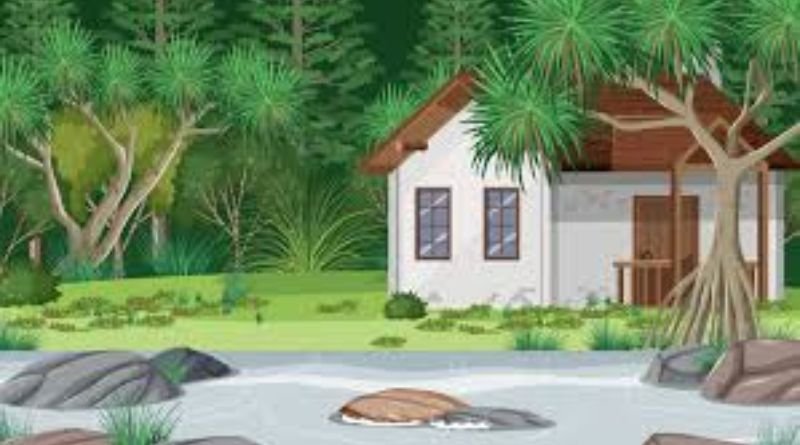Clipart has been a staple in graphic design for decades, offering quick and easy visual elements for a wide range of projects. Whether you’re designing a flyer, a website, or a presentation, clipart images can enhance your content and make it visually appealing. One popular and versatile category of clipart is house clipart, which can represent a wide variety of themes from real estate to home improvement, family life, and beyond. In this article, we’ll explore the significance and various uses of house clipart, particularly focusing on the term 2jtagpmopvk= house as a reference for finding clipart images related to houses.
We’ll also take a closer look at the different types of house clipart, how to use them effectively, and the best practices for integrating them into your projects. Additionally, we’ll cover frequently asked questions to help you make the most of house clipart in your designs.
Table of Contents
What is House Clipart?
House clipart refers to vector or raster images that represent a house, typically used in digital and print media. These images can range from simple, line-drawing depictions of houses to detailed, three-dimensional representations of homes. House clipart is used in various contexts, including real estate advertising, home décor websites, educational materials, architectural presentations, and more.
Clipart images are often pre-made and available for download, which makes them an efficient choice for designers and individuals looking to quickly enhance their content without creating original artwork from scratch. The term “clipart: 2jtagpmopvk= house” specifically refers to a coded search term, possibly for a specific clipart database or platform, to help users locate house-related images based on a unique identifier or tag.
The Many Types of House Clipart
House clipart can come in many different styles, colors, and formats. The vast array of options available ensures that designers can find the perfect image to match their project’s needs. Below are some of the common types of house clipart that you might encounter.
1. Simple Line Art House Clipart
Line art is one of the simplest and most commonly used forms of clipart. These images feature clean, clear outlines of houses without any fill or intricate details. Simple line art house clipart is ideal for projects that require minimalist designs or when the clipart will be used as part of a larger pattern or background.
- Use Case: Ideal for children’s books, educational materials, or DIY project guides.
2. Colored House Clipart
Some house clipart images are pre-colored with bright, vibrant hues that add personality and visual interest to the design. These images can be more detailed, often incorporating elements like windows, doors, and roofs with shading or texture.
- Use Case: Useful for marketing materials, real estate listings, and flyers that require eye-catching visuals to attract attention.
3. Three-Dimensional House Clipart
For a more realistic and visually complex design, three-dimensional (3D) house clipart can be used. These images offer a more detailed representation of houses, with shading, perspective, and depth that mimic real-world structures.
- Use Case: Perfect for architectural presentations, real estate websites, and virtual home tours.
4. Cartoon-Style House Clipart
Cartoon-style houses often have exaggerated, whimsical features, such as oversized windows, crooked chimneys, and vibrant colors. These images are more playful and can appeal to a younger audience or be used in informal marketing campaigns.
- Use Case: Great for kids’ education, home and garden-related marketing, and creative design projects.
5. Icon-Style House Clipart
Icon-style house clipart is typically small and simple, often used as part of a set of icons for websites, mobile apps, or interfaces. These images focus on conveying the concept of a house in a minimalist way, often using geometric shapes and clean lines.
- Use Case: Ideal for app interfaces, web design, and signage where simplicity and clarity are key.
How to Use House Clipart Effectively
Using house clipart can be a great way to enhance your design, but it’s important to do so thoughtfully. Here are some tips on how to use house clipart effectively across various mediums:
1. Match the Style with Your Theme
When selecting house clipart, always consider the overall tone and theme of your project. For instance, a 3D, realistic image of a house may be appropriate for a real estate website, but a cartoon-style house would be better suited for a children’s educational book. Matching the clipart style to your message helps ensure that your design feels cohesive.
2. Consider Placement and Size
Make sure that the house clipart fits well within the layout of your design. It should be appropriately sized—neither too large nor too small—and placed in a way that complements other visual elements on the page. If you’re using multiple clipart images, ensure that there’s enough space between them so the design doesn’t feel cluttered.
3. Customize Clipart to Fit Your Needs
Many clipart images can be edited or customized to better suit your design. If the clipart is in vector format, you can change the colors, add textures, or even alter certain elements (like the size of windows or doors) to make the house more fitting for your project. Customization helps you avoid using generic imagery that might look out of place.
4. Use Clipart for Branding
Incorporating house clipart into your branding can be an effective way to communicate the nature of your business. For example, if you’re a home décor company, using house clipart in your logo, business cards, or marketing materials can convey your brand’s focus quickly and clearly.
5. Ensure Quality and Resolution
Always make sure that the clipart images you use are of high resolution, especially if they will be printed. Low-resolution clipart can appear pixelated or blurry, which can detract from the overall quality of your design. Vector-based clipart is a great choice for high-quality, scalable images.
The Advantages of Using House Clipart
There are several reasons why house clipart is a popular choice among designers, marketers, and educators:
1. Time-Saving
House clipart provides an immediate solution for anyone who needs visual elements quickly. It’s much faster to select and use pre-designed clipart than to create original artwork from scratch.
2. Versatility
Clipart can be used across a variety of platforms and media. From digital to print, house clipart is adaptable to flyers, websites, brochures, presentations, and more.
3. Cost-Effective
Many clipart images are free or very inexpensive, making them an accessible option for those with limited budgets. Even premium clipart is often more affordable than hiring a designer to create custom artwork.
4. Consistent Aesthetic
Using house clipart can help maintain a consistent aesthetic throughout a project. Whether you’re creating a series of social media posts or developing a presentation, house clipart ensures that the design remains visually unified.
FAQs About House Clipart
1. Can I use house clipart for commercial purposes?
It depends on the license associated with the clipart. Some clipart is free to use for both personal and commercial projects, while others may have restrictions. Always check the licensing terms to ensure that you’re using the clipart in accordance with the creator’s guidelines.
2. Where can I find high-quality house clipart?
There are many websites that offer free and paid house clipart. Some popular platforms include Freepik, Pixabay, Shutterstock, and Adobe Stock. You can search for house clipart by style, format, or theme to find the image that best suits your project.
3. How do I modify house clipart?
If you are working with vector-based clipart (such as SVG files), you can modify it using software like Adobe Illustrator, Inkscape, or CorelDRAW. For raster images (like PNGs), you can use photo editing software such as Adobe Photoshop or GIMP to make adjustments to the clipart.
4. What are the best formats for house clipart?
Vector formats such as SVG, EPS, and AI are often the best choice for clipart because they are scalable without losing quality. For raster images, PNG and JPEG are commonly used, but PNG is preferred for images that require a transparent background.
5. Can I combine house clipart with other images?
Yes! House clipart can be combined with other images or design elements to create a more dynamic and engaging composition. For example, you might layer a house clipart image over a background photo or incorporate it into a larger design with text and other graphics.
Conclusion
House clipart is a versatile and valuable tool for designers, educators, marketers, and anyone looking to incorporate visual elements related to homes, real estate, or family life into their projects. Whether you are creating a logo, a website, or an educational resource, house clipart offers a quick, cost-effective way to enhance your designs and communicate your message more clearly.
With a wide range of styles available, from simple line drawings to 3D images, house clipart can fit nearly any design need. By understanding how to use it effectively and keeping in mind best practices for customization, placement, and licensing, you can make the most of house clipart in your projects.
Whether you’re designing a flyer for a real estate business or creating a fun illustration for a children’s book, house clipart offers endless possibilities to bring your ideas to life.





